You may not find this terribly rewarding unless you're included here, so this is a good time for casual and random browsers to turn back before they get too caught up in the sweep and majesty of the proceedings and can't let go.
24 October 2018
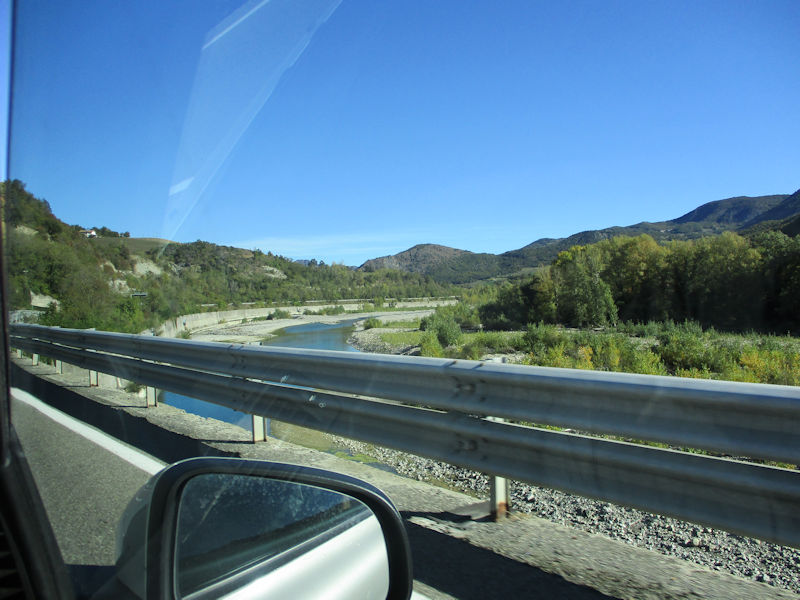
Up and away at the crack of noon, we're following the Trebbia river northward to join the A21 east-west autostrada on our way to Mondovì in the southern Piedmont.
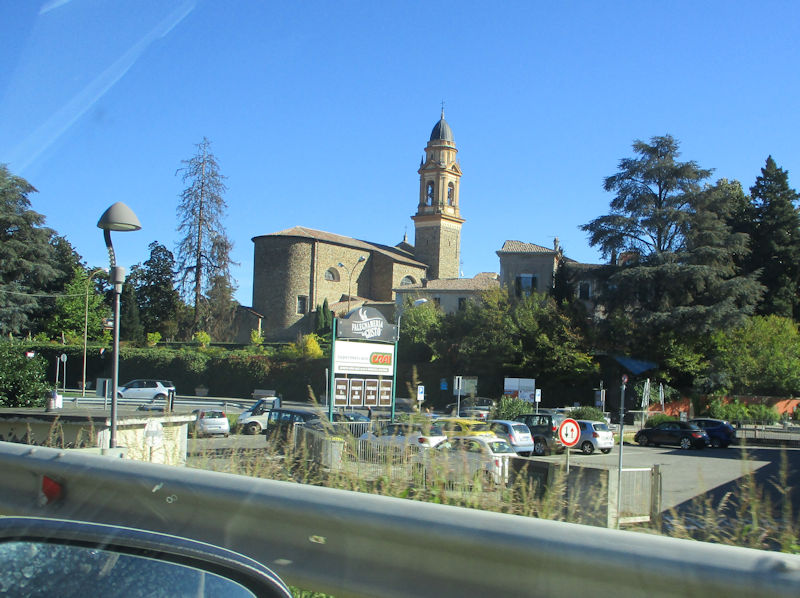
Streaking past the Parochial Church of Sant'Agata in Rivergaro, on the SS45 20-odd km north of Bobbio
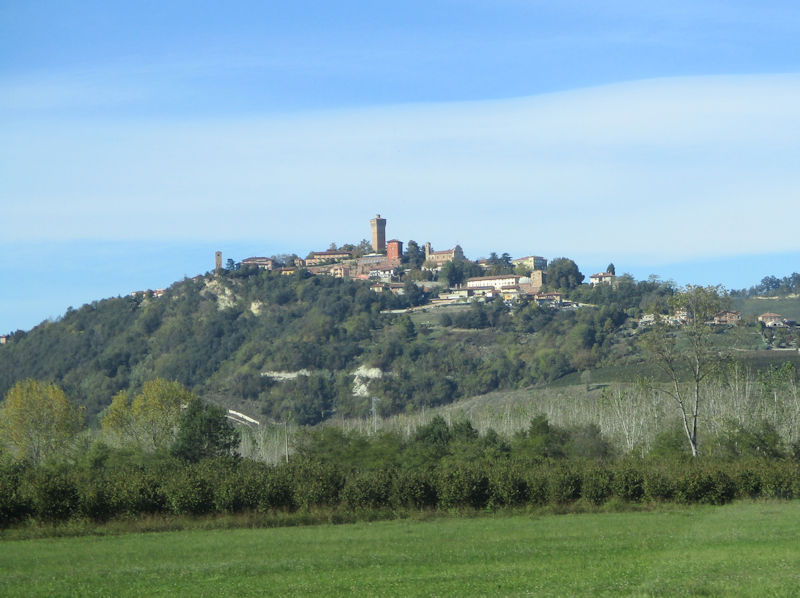
Scenic vistas from the highway. Leaving the A21 at Asti for the A33 past Alba, then some country roads around Bra and onto the E717 Torino-Savona autostrada, we're about three hours on the road. Mondovì is an interesting city of about 22,500 residents in Cuneo province in the south of the Piemonte region, about 75km south of Torino and 50km north of Savona on the Mediterranean riviera.
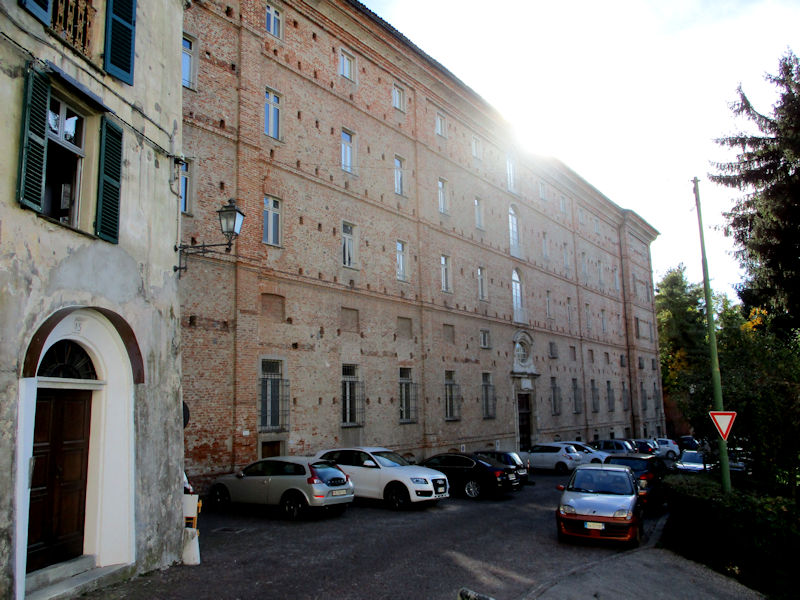
Our cute little Volvo (Sven) is getting comfy in the nearest free parking in the neighborhood, just 60m down the Via Vasco from our destination.
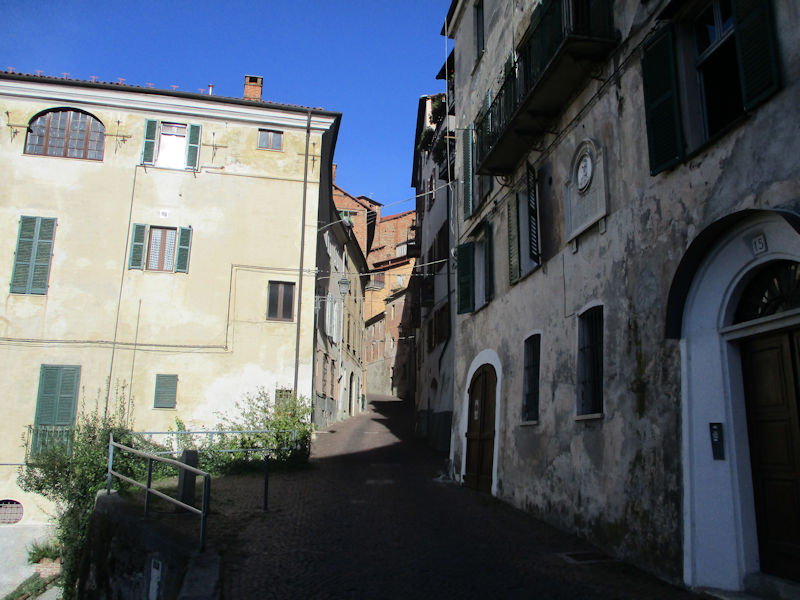
The Via Vasco in the upper town. There are any number of rioni or traditional districts to Mondovì, but briefly there are three main distinctions to be made. The oldest part of town, formally established as a commune with a podestà in 1198, is here at the top of Monte Regale hill and is called 'Piazza'; at the foot of the hill is a later but still fairly charming town centre, called Breo, along the small river Ellero, that grew up mainly since the 18th century brought new business and the 19th brought the railroad; and surrounding all of it, and especially in the Altipiano district, are some suburban and industrial zones and large commercial centres of more recent times.

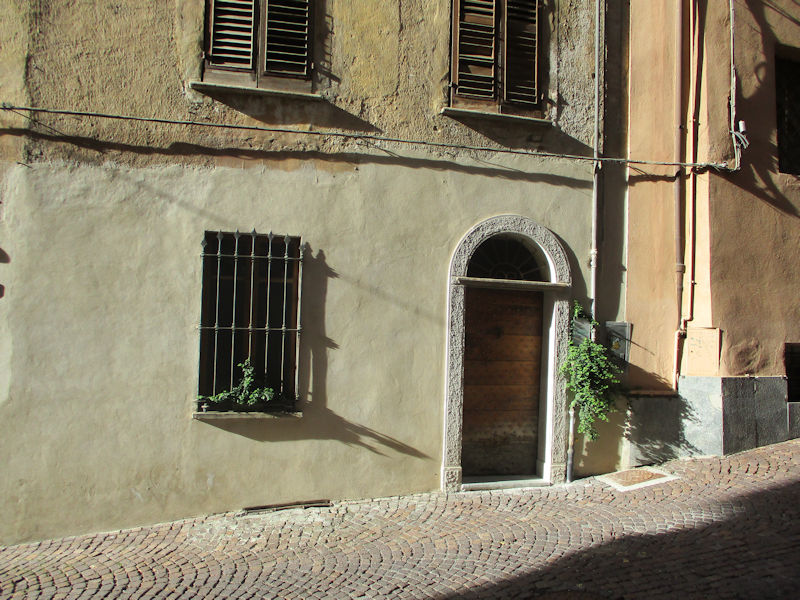
We're booked into Via Vasco 10a, here, an apartment called Ca Vasco where we're met by Bruno Fausto to get us settled in.
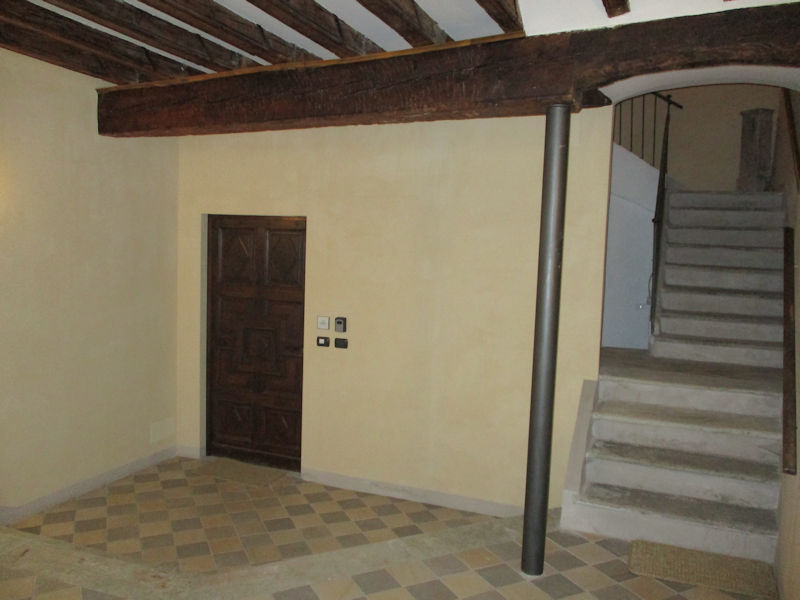
The little lobby inside the typical Italian Fort Knox-style five-lock street door, leading to the typical Italian Fort Knox-style five-lock apartment door
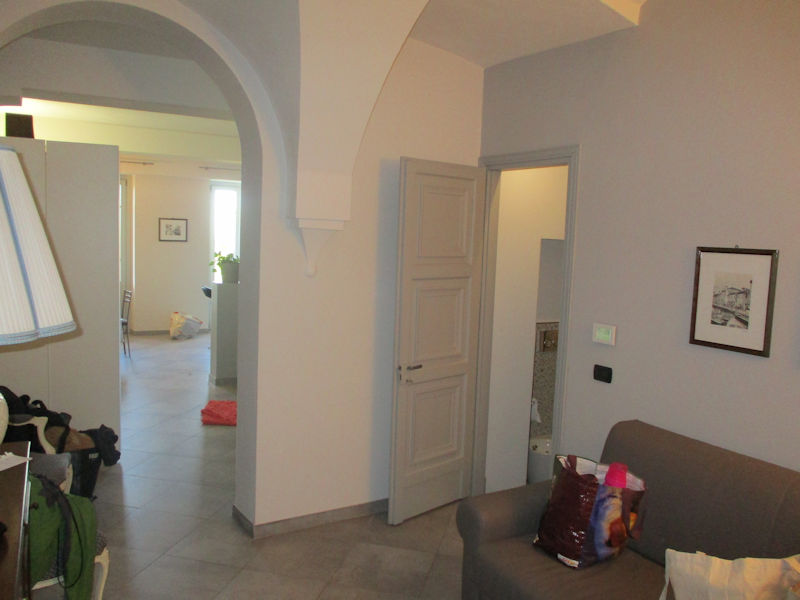
A spacious foyer
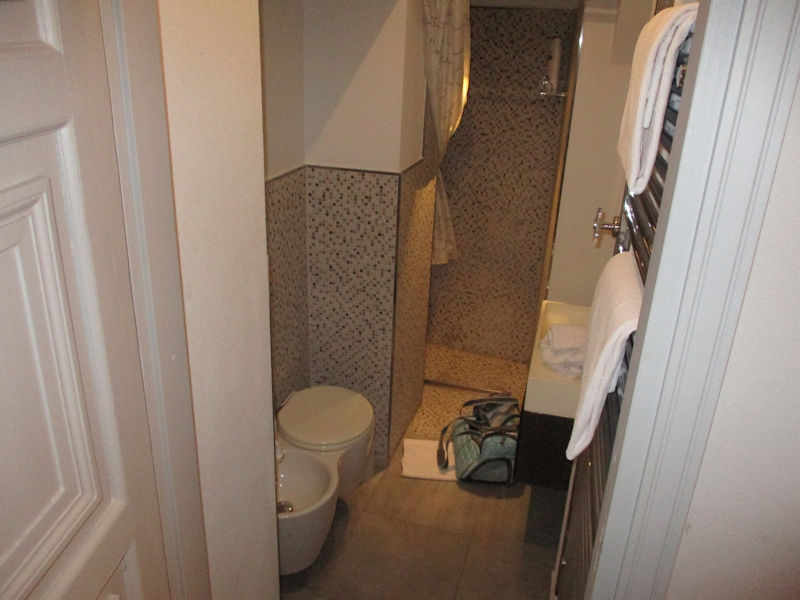
And a well-designed bathroom in the very small space available, with an ingenious toilet/bidet contraption that you could probably fit into your knapsack, except for the plumbing
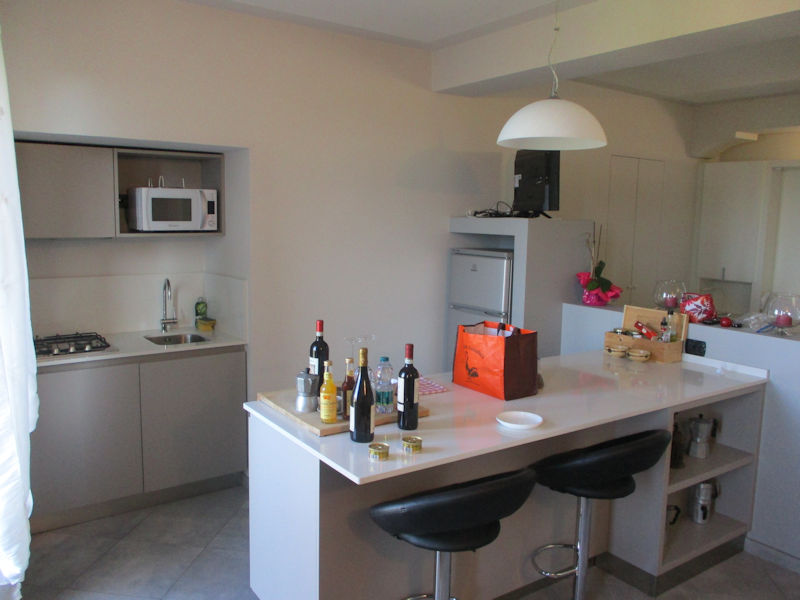
A well-equipped kitchen with some complimentary stuff for welcoming with
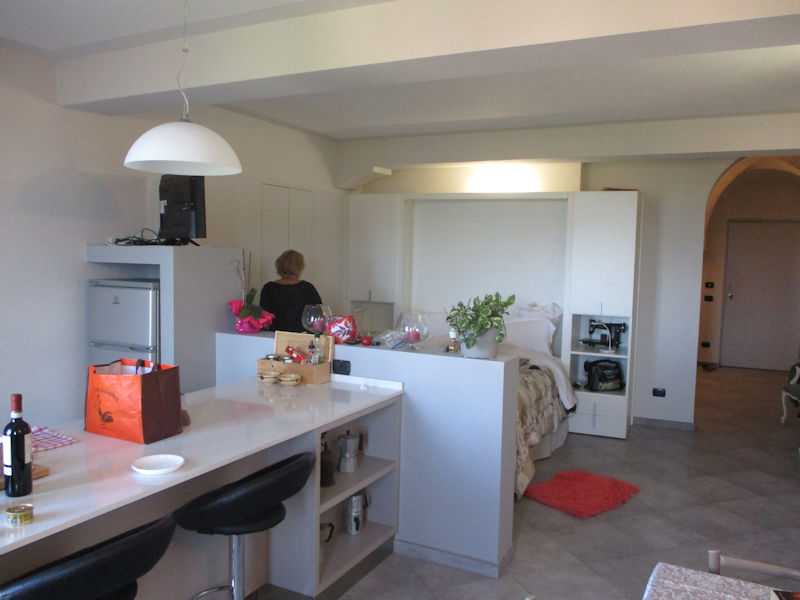
An open-plan kitchen and bedroom, and with good wifi!
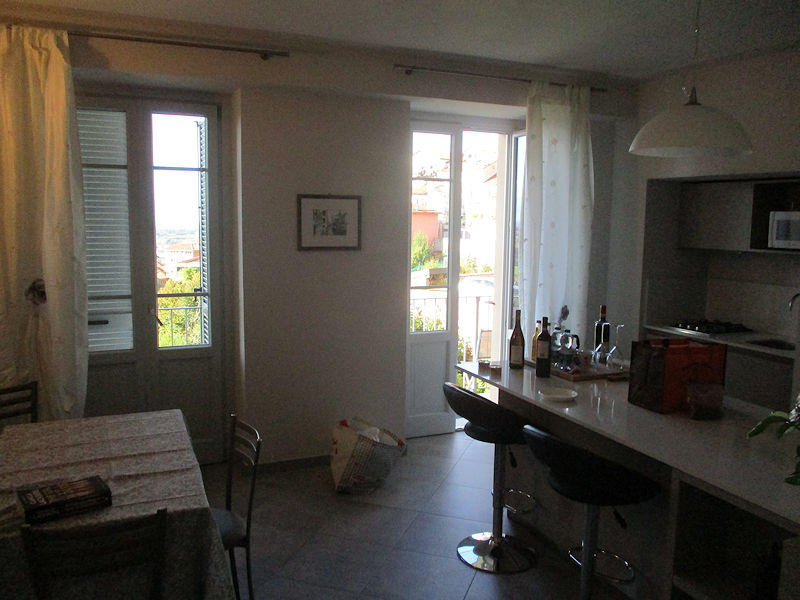
And a small balcony . . .
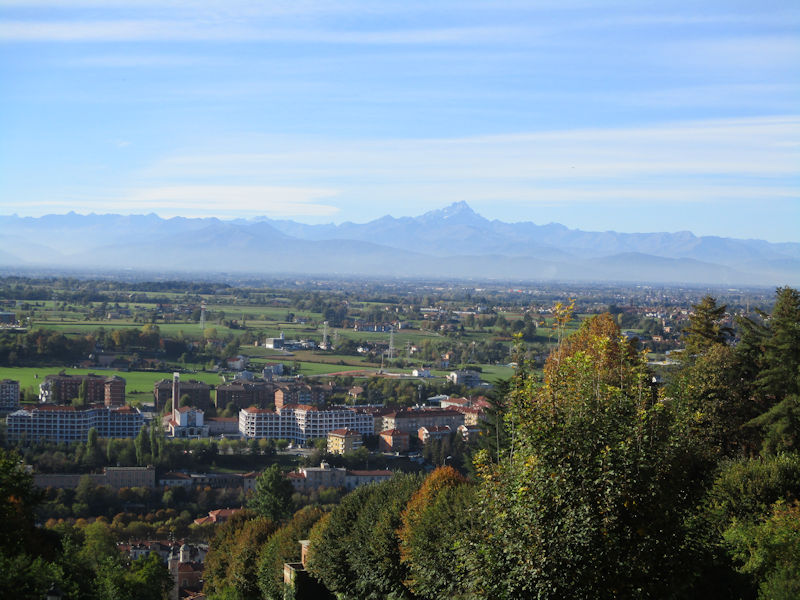
. . . with an amazing view across the plain of Cuneo at the southern end of the Piemonte region, in the valleys of the rivers Po and Tanaro, encircled by the Langhe hills to the northeast and the Maritime and Cottian Alps to the west and south. That pyramid on the French-Italian border 65km to the west is Monte Viso, at 3,842m the highest peak in the Cottian Alps.
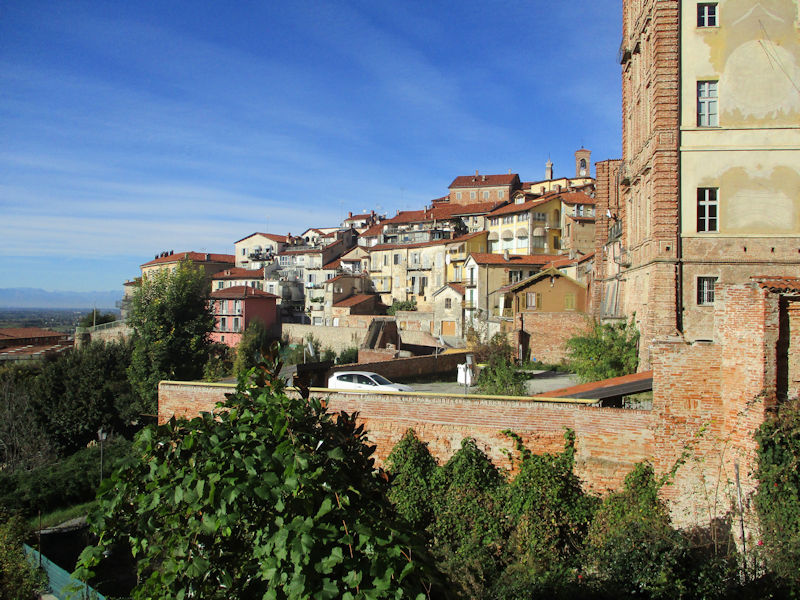
Our neighbors along the western side of the Piazza district on Monte Regale (the whole area around Mondovì is known as the Monregalese, and the locals are the Monregalesi)
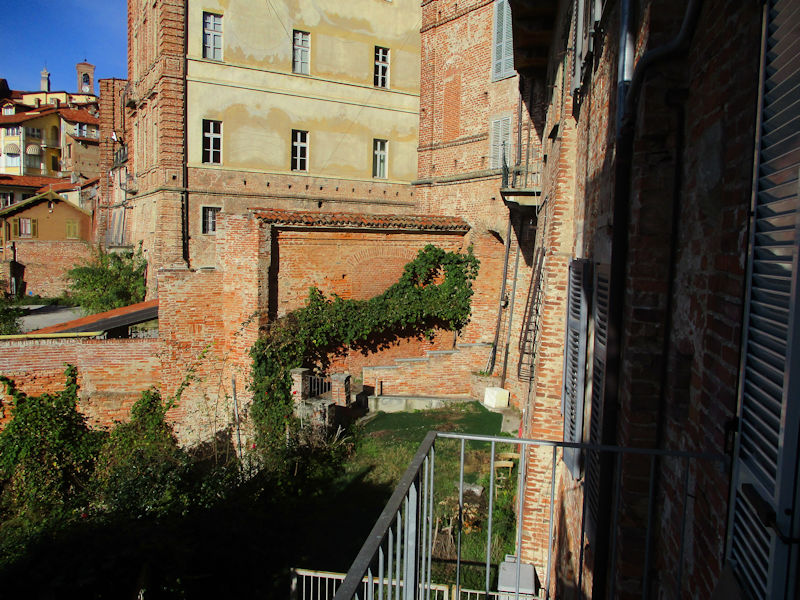
From our balcony (too high for Melvin to contemplate jumping off it)
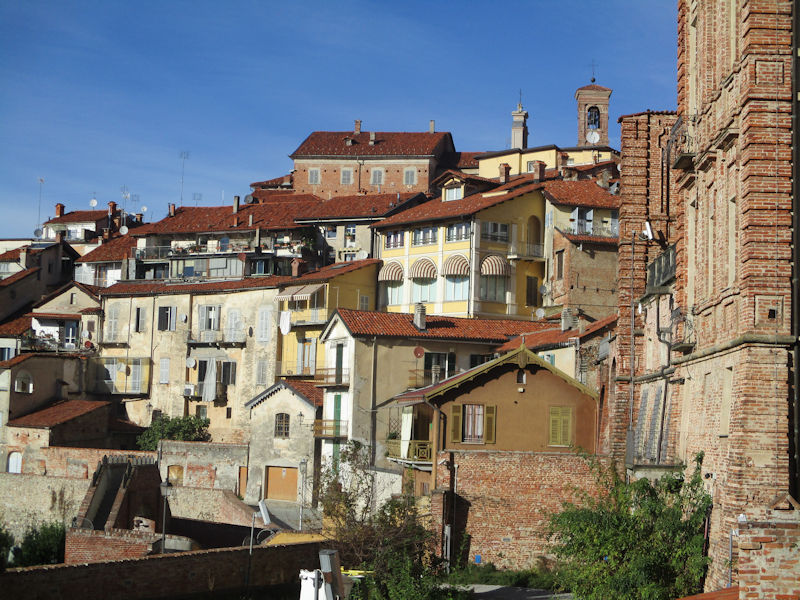

We're headed out to reconnoitre the upper town; here's the immediate view out our front door.
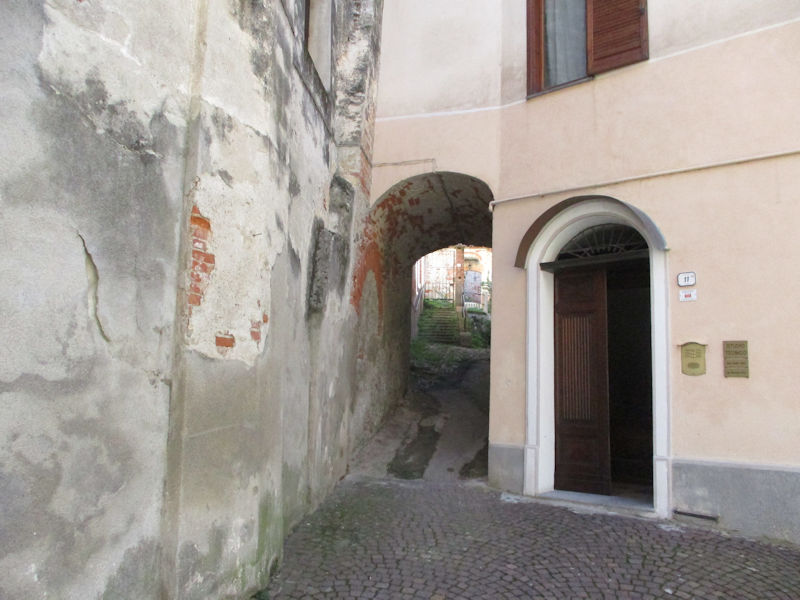
Not that way.

The upper part of the Via Vasco
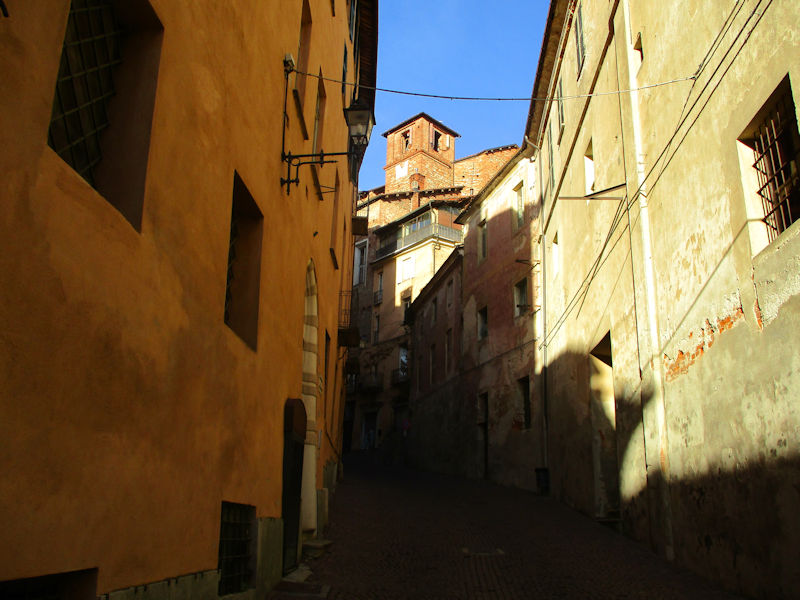

An alternative name of the street is the Via Porta di Vasco -- one can speculate that that might once have been the Vasco gate. The road leads down the hill and out southward to the present town of Monastero di Vasco.

It's just 100m up to the old town centre.

Past the Palace of Justice and, just before the arches of the arcade, the funicular that runs every ten minutes between Piazza and the Breo district below.

Another view of the Via Vasco

And this is the amazing centre of the Piazza district, fittingly called the Piazza Maggiore.

At the southern end of the piazza, that's the Antico Palazzo di Città or Old Town Hall, the seat of government in the earliest days of the town.
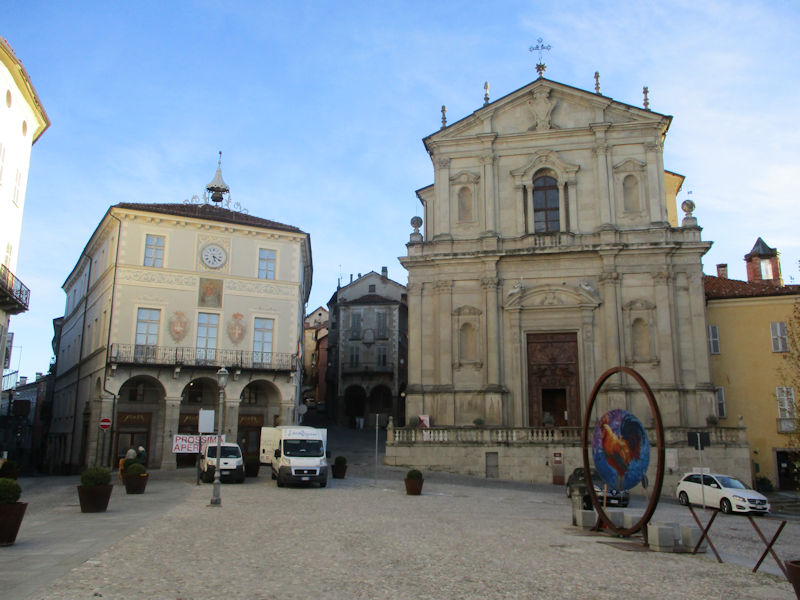
And next to it, the Chiesa di San Francesco Saverio, dedicated to St Francis Xavier (1506-1552), a Basque companion of Ignatius Loyola, a co-founder of the Jesuit order and first Christian missionary into Japan, Borneo, etc. It and the religious complex behind it, called 'La Missione', were evidently built between 1664 and 1678, though the façade came later.

And hiding between them, this is . . . (I never found out what that is, or was).

This, at the north end of the Piazza Maggiore, is the Palazzo del Governatore, recently restored, with the coats of arms of the families who governed the town in the old days. The Pizzeria Belvedere is on the ground floor, and wasn't bad at all -- there are four good restaurants grouped just around this piazza, along with ice cream shops, etc.
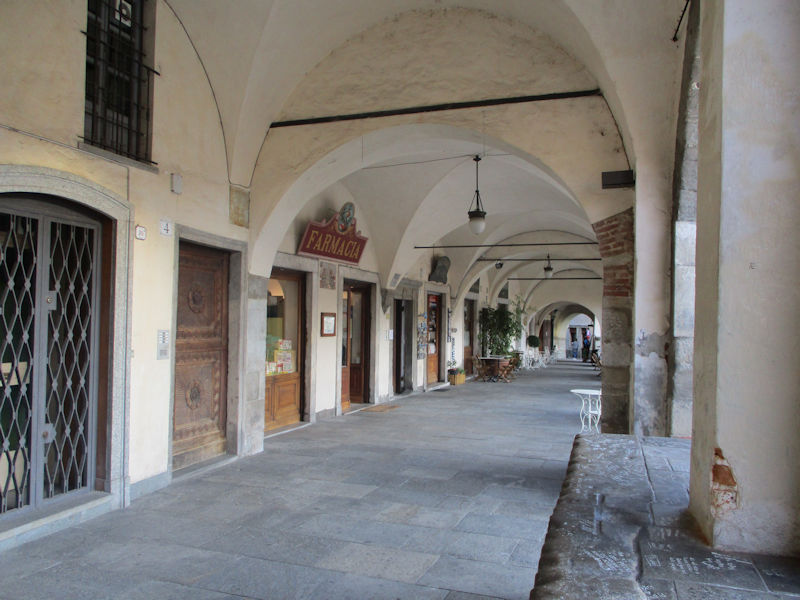
The arcade along the eastern side of the piazza -- the best of the restaurants, in our opinion, the Cantina Bonaparte, lies in the cellars directly below this photo.

Mondovì was evidently established as a commune on this hilltop in 1198 by survivors of local difficulties in surrounding villages, including Vico (now called Vicoforte, which we'll visit in a few days), and the present name derives from the Piedmont dialect name 'The Mount of Vico'. Shortly after, in 1200, the forces of the Bishop of Asti conquered the town and, in 1231, destroyed it. Rebuilt, in the following year Mondovì, in league with Cuneo and Savigliano and backed by Milan, was able to beat back another attack by the Astigiani.

The 13th century Palazzo dei Bressani with the sun on it. Charles of Anjou (St Louis' brother), invited by the Pope to make himself king of southern Italy and Sicily, occupied Mondovì in 1260 and much of Piedmont in passing, but by 1274 the Bishops of Asti were back in charge, then in 1305 the Angevins were back again, followed in turn by the Visconti of Milan, the Marquises of Monferrato, next the local Acaja (or Achaea) branch of the Savoy, and after 1418 by the Savoyard main branch expanding into the Piemonte region. By the 16th century, Mondovì was the most populous city in the Piemonte.

The Gothic Piazza Maggiore itself is dated to the 14th to 16th centuries. The French occupied the Savoy and this city in 1537 but, after he commanded the Spanish army in defeating France at San Quentin in 1557, the dispossessed Duke of Savoy Emmanuel Philibert was rewarded with the return of his lands in Alpine France and the Piemonte (moving his capital from Chambéry to Torino), including the Monregalese lands around Mondovì.
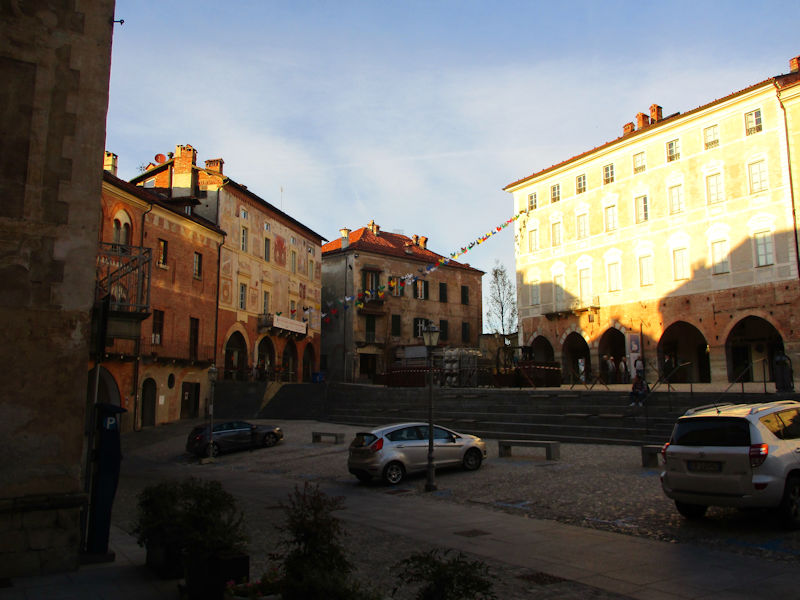
The last of the sunlight. The 17th century in Mondovì was marred by the so-called 'Wars of Salt' (there have probably been more Salt Wars then religious ones overall), three local insurrections between 1680 and 1699 against the Dukes of Savoy and their autocratic attack on traditional rights bestowed upon the Monregalesi. After some successes, the local nobility got cold feet and failed to support the resistance fighters, who fell back upon guerrilla tactics in the mountains but were eventually defeated and deported with their families to the Po valley flatlands by Vercelli far to the north.

No menu unscrutinized. In 1796 Napoleon Bonaparte was roaming successfully around northern Italy and the Piedmont, and there ensued here the only action won by the Piedmontese troops during the campaign, when as part the Battle of Mondovì on 21 April 1796 the French commander Gen. Stengel was killed and his cavalry troop routed. Napoleon won the battle and captured Mondovì anyway, but the town fathers agreed to provide large food supplies for his nearly starving troopers, and so the town was not pillaged.
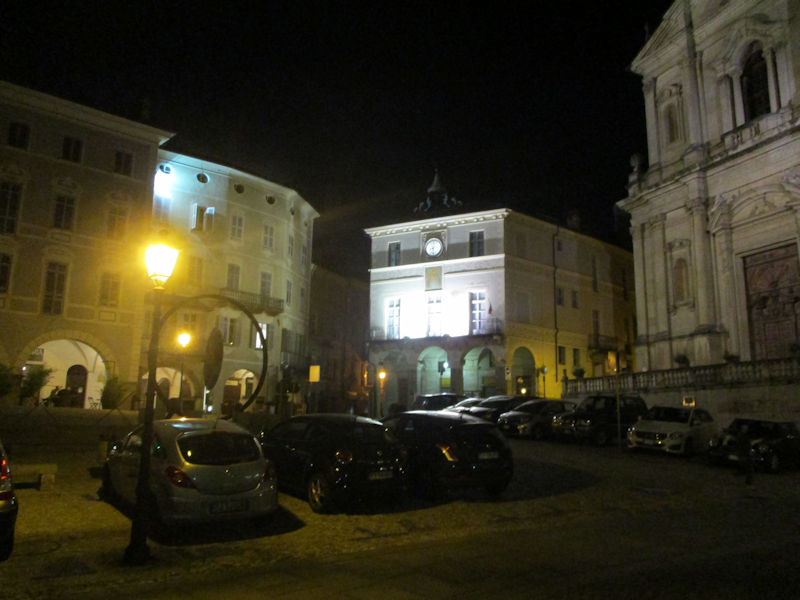
Dinner's over in the Locanda dei Bressani, named for Bressano, founder of the family who were the first lords of 13th century Mondovì. The 13th century Palazzo dei Bressani is just across the piazza.

The church of San Francesco Saverio
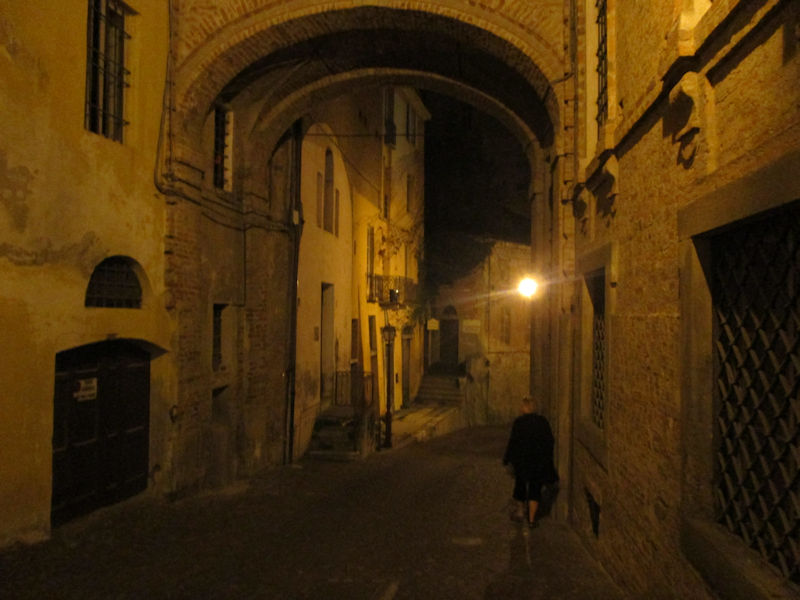
Home on the Via Vasco
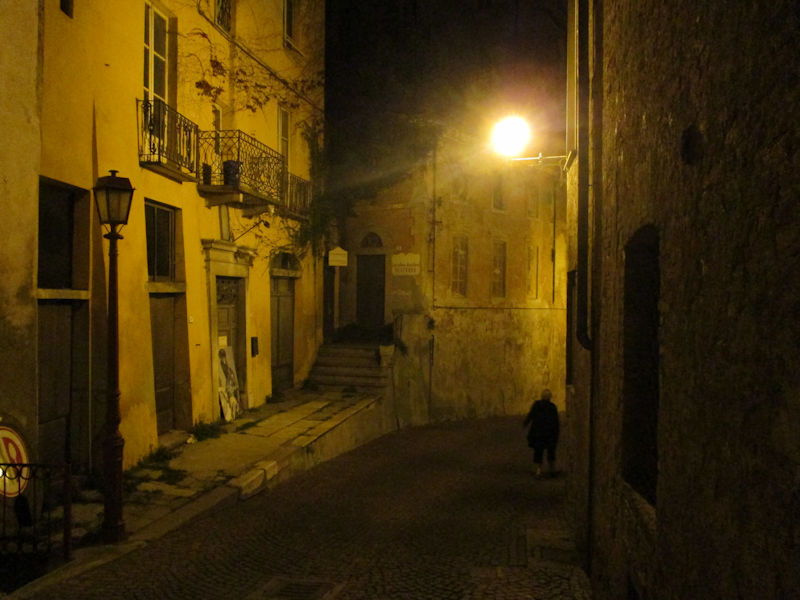
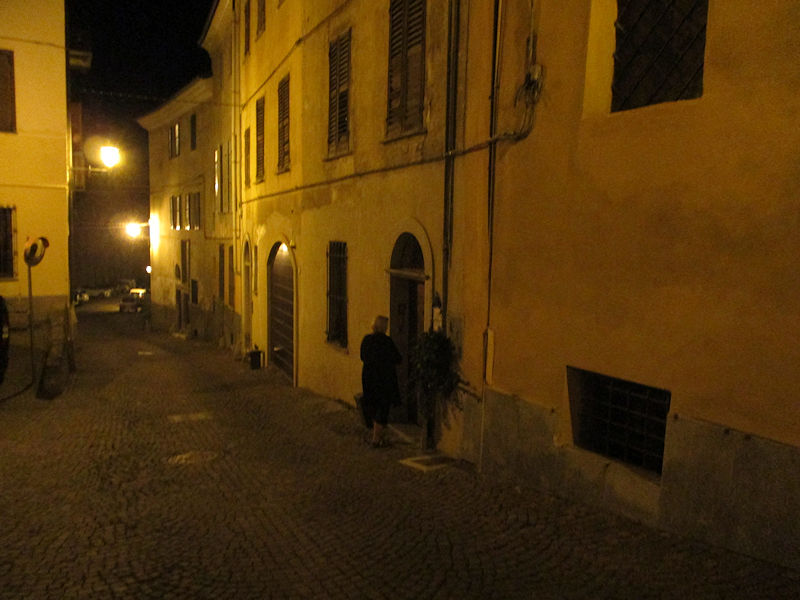
Tomorrow, a good look round upper and lower Mondovì

 Dwight Peck's personal website
Dwight Peck's personal website







































